Intel Comet Lake-H Fights AMD's Ryzen 4000 With Eight Cores at 5.3 GHz
Play 14nm again, Sam, and again, and again
AMD's 4000-Series "Renoir" Ryzen Mobile chips arrived last week to critical acclaim, notching an impressive step forward for AMD's notebook ambitions as it takes the process node leadership position against Intel in laptops for the first time in history, but Intel isn't sitting still – its retort comes in the form of the H-Series Comet Lake chips for high-performance gaming and creativity-focused laptops.
Intel's new lineup pushes clock rates up to a maximum of 5.3 GHz, a new peak for laptops, and the company also brings its Core i7 lineup that comprises the bulk of its sales volume up to a peak of eight cores and 5.1 GHz for the first time. That's a notable clock speed advantage over AMD's Ryzen lineup, but unlike AMD's chips that come with a denser 7nm process and a new architecture, Intel's new lineup isn't really all that new: The chips are an iterative update of the previous-gen Coffee Lake processors and come with yet another flavor of the highly-refined 14nm process, so they still span from four to eight cores and fit within a 45W TDP.
Intel positions its chips as the leaders for desktop gaming, which often relies upon high clock speeds, but the company's peak 5.0 GHz (and beyond) clock speeds come in the form of its Thermal Velocity Boost (TVB) technology that requires the processor to operate in optimal temperature ranges, so performance will obviously vary based on the laptop's cooling capabilities. That means you'll likely only see those peaks in thicker and heavier laptops.
In either case, Intel touts that it has 30 thin-and-light gaming designs (sub-20mm thickness) coming to market, and over 100 other new laptop designs on the way. The company also recently touted that it has 70+ Project Athena laptops in the works, so it will obviously rely upon tight integration to wring out extra performance from other platform-level advantages, like Wi-Fi 6, AX201 Gig+, and Thunderbolt 3 connections.
| Processor Number | Base / Boost | Cores / Threads | TVB | L3 Cache | Memory |
|---|---|---|---|---|---|
| Intel Core i9-10980HK | 2.4 / 5.3 | 8 / 16 | x | 16 MB | DDR4-2933 |
| Core i9-9980HK | 2.4 / 5.0 | 8 / 16 | x | 16 MB | DDR4-2666 |
| Core i9-9980H | 2.3 / 4.8 | 8 / 16 | x | 12 MB | DDR4-2666 |
| Intel Core i7-10875H | 2.3 / 5.1 | 8 / 16 | x | 16 MB | DDR4-2933 |
| Intel Core i7-10850H | 2.7 / 5.1 | 6 / 12 | x | 12 MB | DDR4-2933 |
| Core i7-9850H | 2.6 / 4.6 | 6 / 12 | Row 5 - Cell 3 | 12 MB | DDR4-2666 |
| Intel Core i7-10750H | 2.6 / 5.0 | 6 / 12 | x | 12 MB | DDR4-2933 |
| Core i7-9750H | 2.6 / 4.5 | 6 / 12 | Row 7 - Cell 3 | 12 MB | DDR4-2666 |
| Intel Core i5-10400H | 2.6 / 4.6 | 4 / 8 | Row 8 - Cell 3 | 8 MB | DDR4-2933 |
| Core i5-9400H | 2.5 / 4.3 | 4 / 8 | Row 9 - Cell 3 | 8 MB | DDR4-2666 |
| Intel Core i5-10300H | 2.5 / 4.5 | 4 / 8 | Row 10 - Cell 3 | 8 MB | DDR4-2933 |
| Core i5-9300H | 2.4 / 4.1 | 4 / 8 | Row 11 - Cell 3 | 8 MB | DDR4-2666 |
Intel bumped up the peak dual-core clock speeds to 5.3 GHz for the flagship Core i9-10980HK, a nice 300 MHz increase, but as mentioned, this is only under optimal thermal and electrical conditions and likely won't last for any extended period of time. Intel says the standard Turbo Boost 3.0 / 2.0 frequencies are 200 MHz less than listed, and you'll see those more often during normal use. Intel also divulged that the -10980HK offers an all-core boost of 4.4 GHz and several of the chips have a configurable TDP that peaks at 65W.
Intel says the Thermal Velocity Boost feature contributes 200 MHz to the top boost frequency if the processor is at 65C or below, or 100 MHz if the CPU is from 65C to 85C. This approach leads to a two-tiered maximum power consumption approach, with non-TVB boost clocks pulling 107W (PL2), and peak power weighing in at 135W (an increase of 10W over the previous gen) with a 56 second default tau (boost duration).
Intel also brought its Core i7 lineup to a maximum of eight cores and sixteen threads with the -10875H, and while the company hasn't shared pricing, we expect this to come with a similar price tag to the previous-gen six-core model. Intel also brought clocks speeds up to a peak 5.1 GHz for its Core i7 lineup, and given that the i7 range comprises the bulk of sales, the company expects more than 60% of its new lineup to ship with 5.0 GHz (or beyond) capabilities.
Aside from those changes, the bulk of the improvements lies in the incremental clock speed improvements across the stack. Intel also improved memory from dual-channel DDR4-2666 to DDR4-2933 (up to 128GB) and maintained Optane memory support.
Get Tom's Hardware's best news and in-depth reviews, straight to your inbox.
As before, the HK model is overclockable, while the Core i7-10850H is partially overclockable (a limit of 400 extra MHz). Intel also touts its new Adaptix Tuning Technology that is an automated overclocking software similar to its one-click Intel Performance Maximizer software for desktop chips. This software automatically dials in the best possible overclock based on the power and thermal capabilities of the laptop.
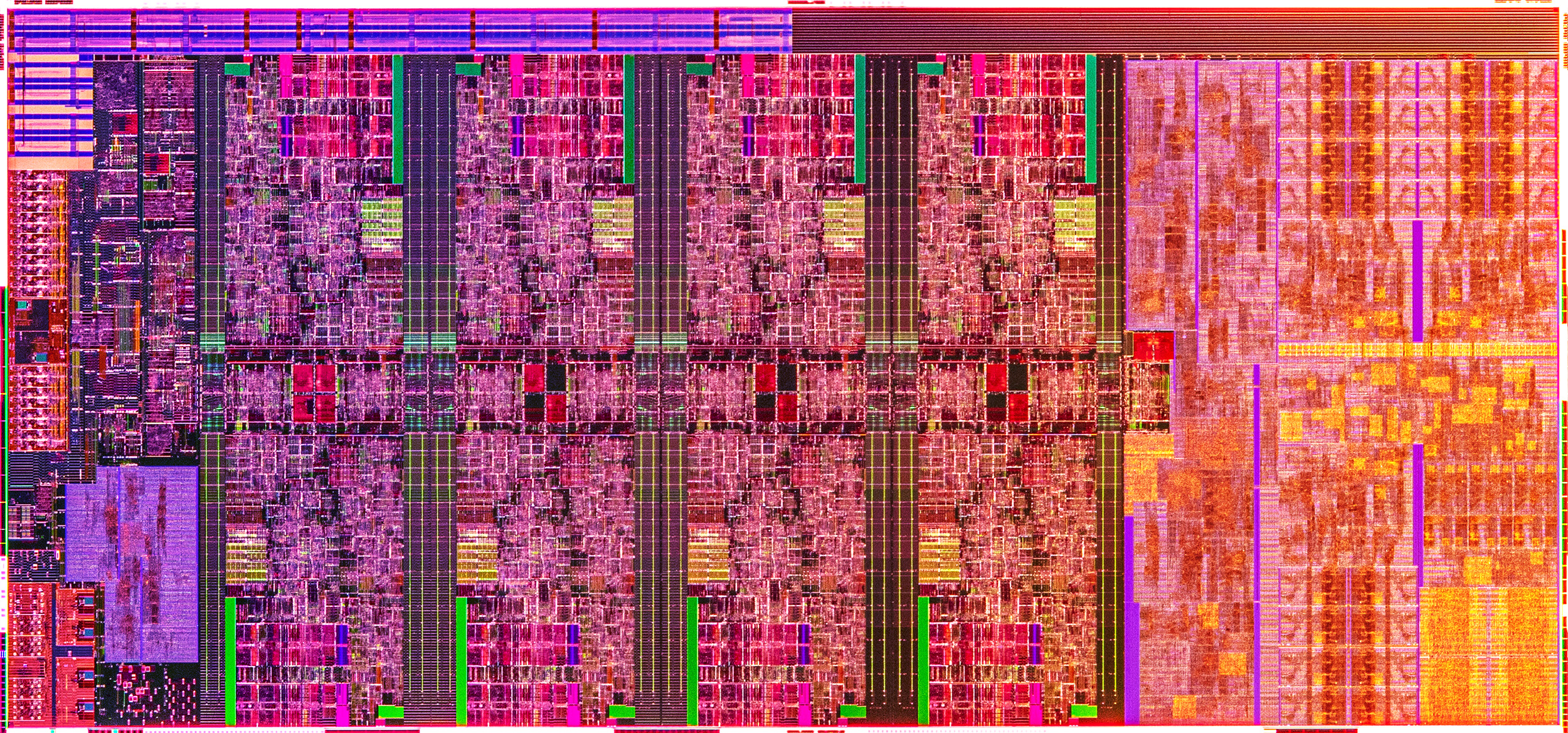
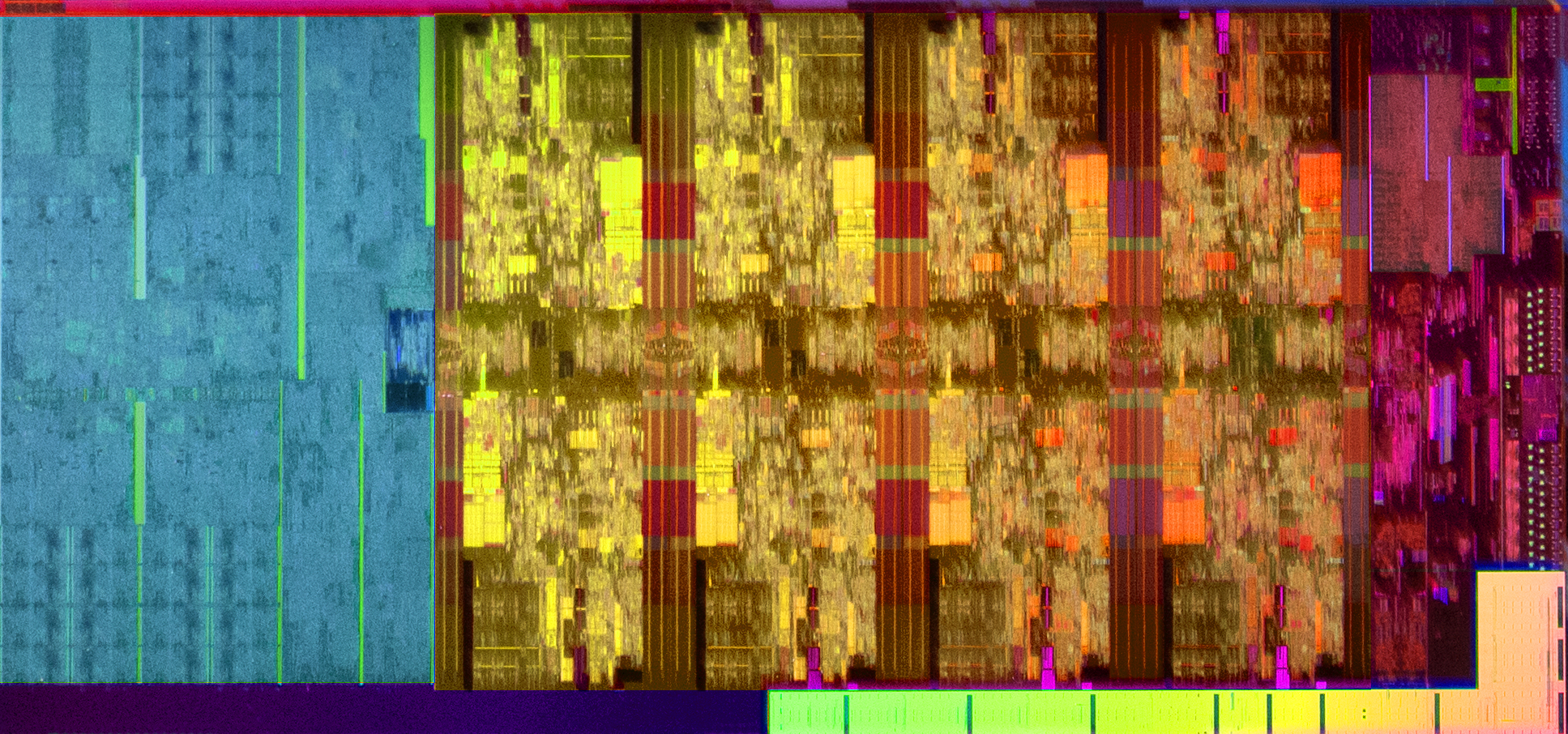
The first image above shows the Comet Lake die, while the second shows the previous-gen Coffee Lake die. As you can see, the die appear identical to the naked eye. Intel has made improvements to the fifth iteration of the 14nm process and perhaps reworked some critical pathways to improve performance, but there appears to be little to no modification on the overall architecture. Intel hasn't disclosed if there are new hardware-based mitigations for the new chips.
Intel does have its 10nm Tiger Lake processors coming to market this year, but said that it continues to use 14nm for the 45W chips due to its higher frequency capabilities.
| Processor Number | Base | Boost | Cores / Threads | TDP | L3 Cache | Memory |
|---|---|---|---|---|---|---|
| Intel Core i9-10980HK | 2.4 | 5.3 | 8 / 16 | 45 | 16 MB | Dual DDR4-2933 |
| AMD Ryzen 7 4900H | 3.3 | 4.4 | 8 / 16 | 45 | 8 MB | Dual DDR4-3200 |
| Intel Core i7-10875H | 2.3 | 5.1 | 8 / 16 | 45 | 16 MB | Dual DDR4-2933 |
| AMD Ryzen 7 4800H | 2.9 | 4.2 | 8 / 16 | 45 | 8 MB | Dual DDR4-3200 |
| Intel Core i7-10850H | 2.7 | 5.1 | 6 / 12 | 45 | 12 MB | Dual DDR4-2933 |
| Intel Core i7-10750H | 2.6 | 5.0 | 6 / 12 | 45 | 12 MB | Dual DDR4-2933 |
| AMD Ryzen 5 4600H | 3.0 | 4.0 | 6 / 12 | 45 | 8 MB | Dual DDR4-3200 |
| Intel Core i5-10400H | 2.6 | 4.6 | 4 / 8 | 45 | 8 MB | Dual DDR4-2933 |
| Intel Core i5-10300H | 2.5 | 4.5 | 4 / 8 | 45 | 8 MB | Dual DDR4-2933 |
The true test comes when Intel lines up against AMD's ultra-competitive Ryzen 4000-series. As we can see, Intel matches AMD core-for-core across the stack, but slathers in higher clock speeds to compete. However, AMD's chips will likely maintain their integrated graphics superiority, and the denser 7nm node brings power improvements that are hard to match.
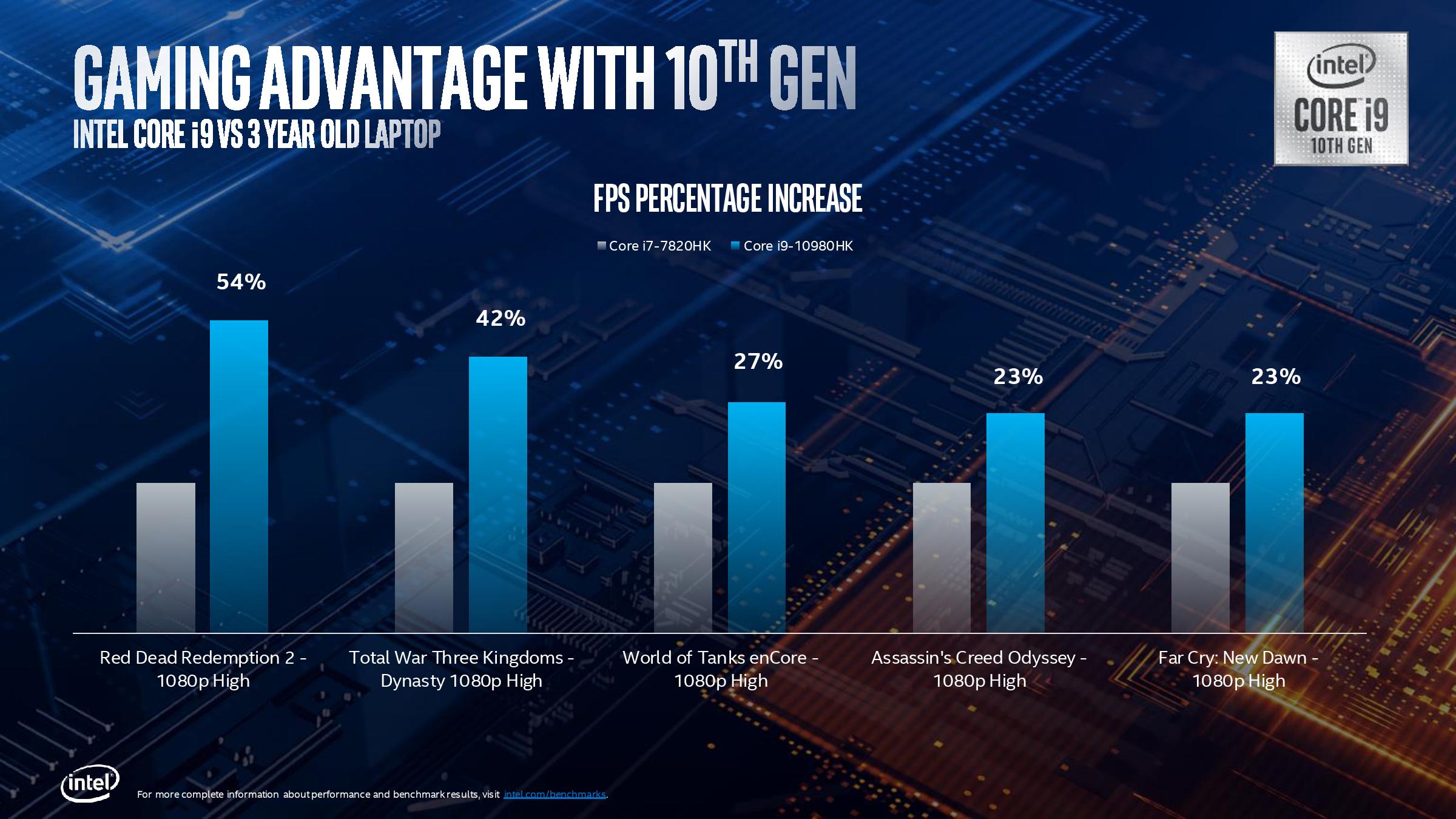

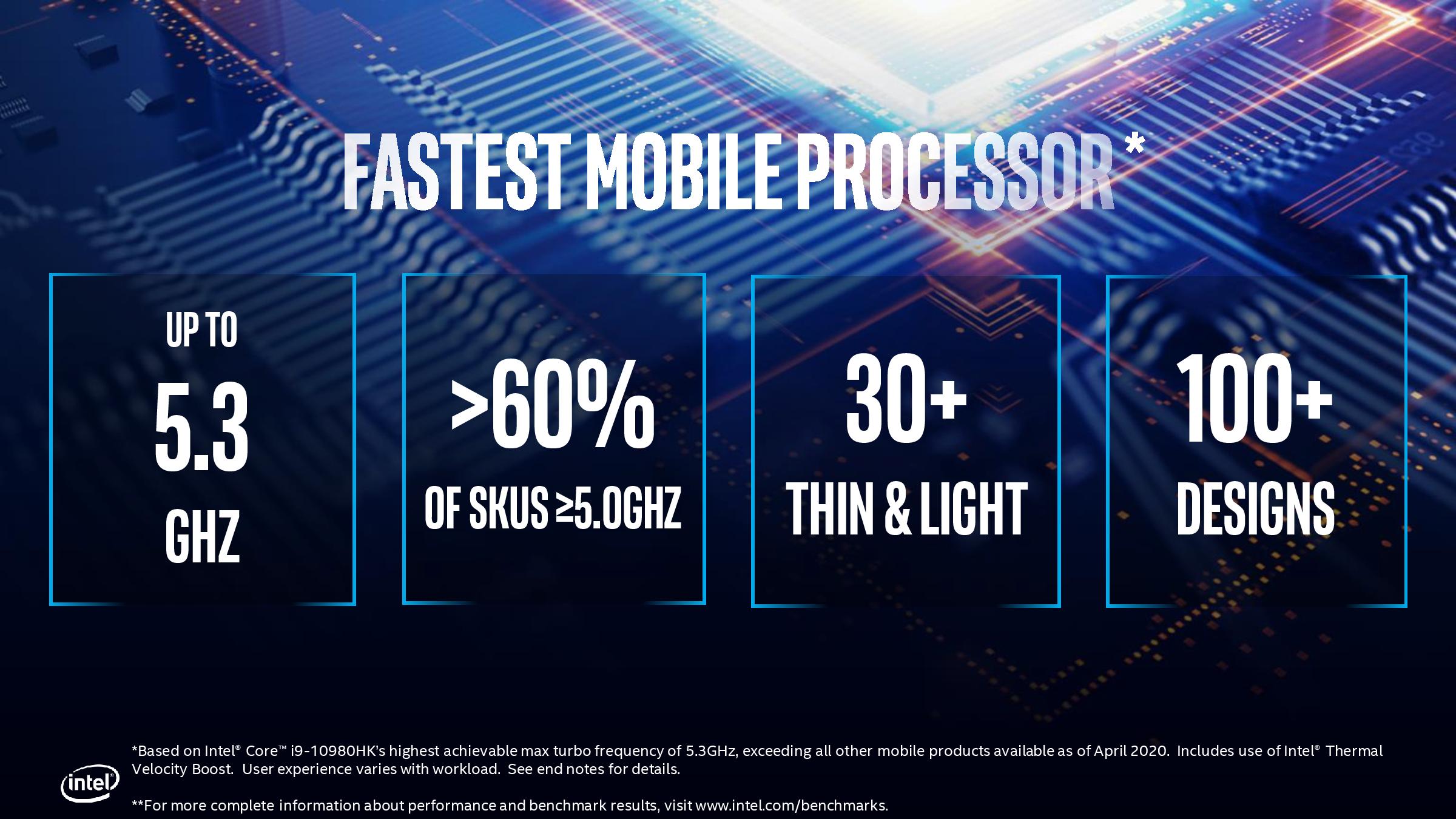

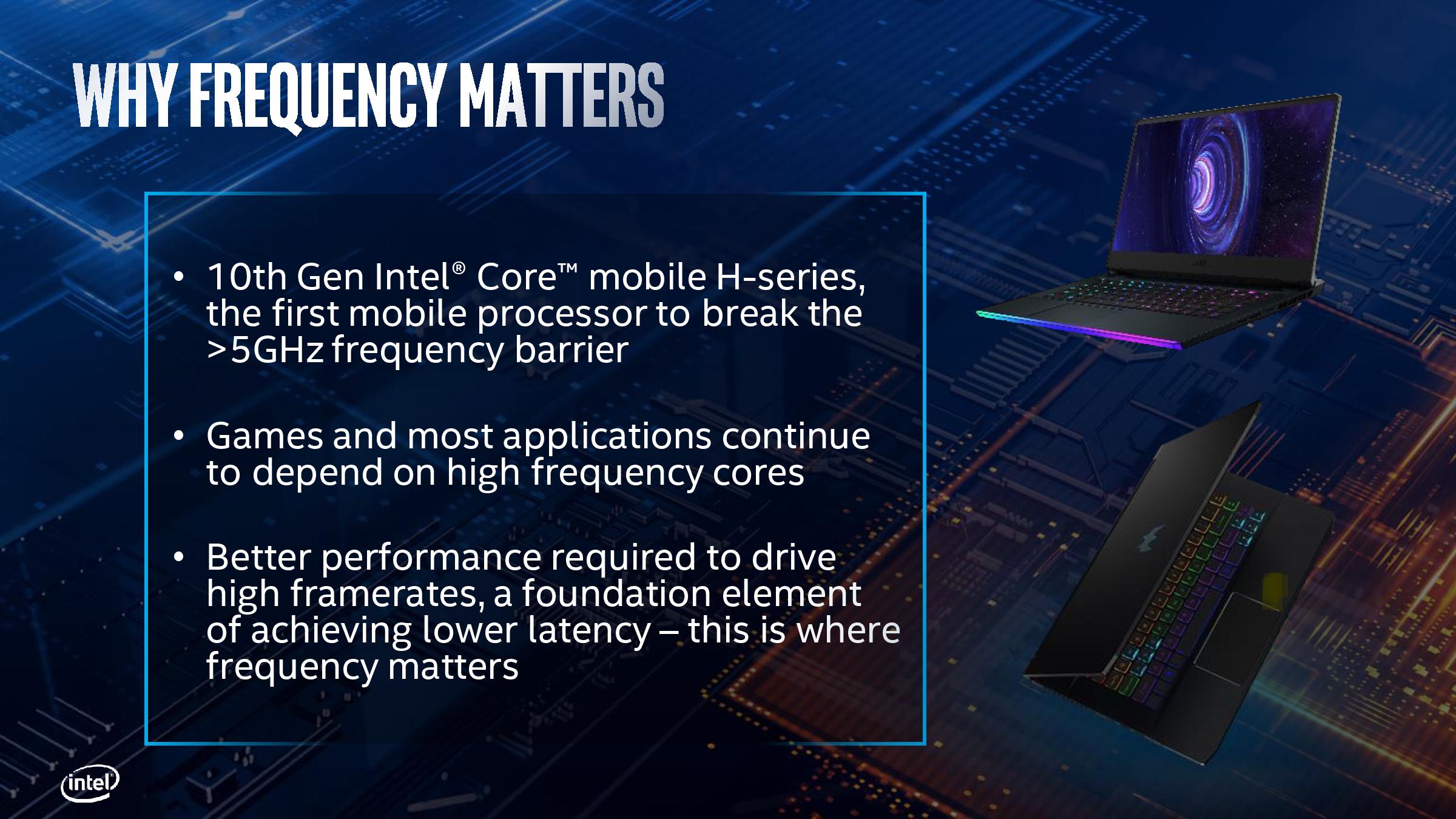

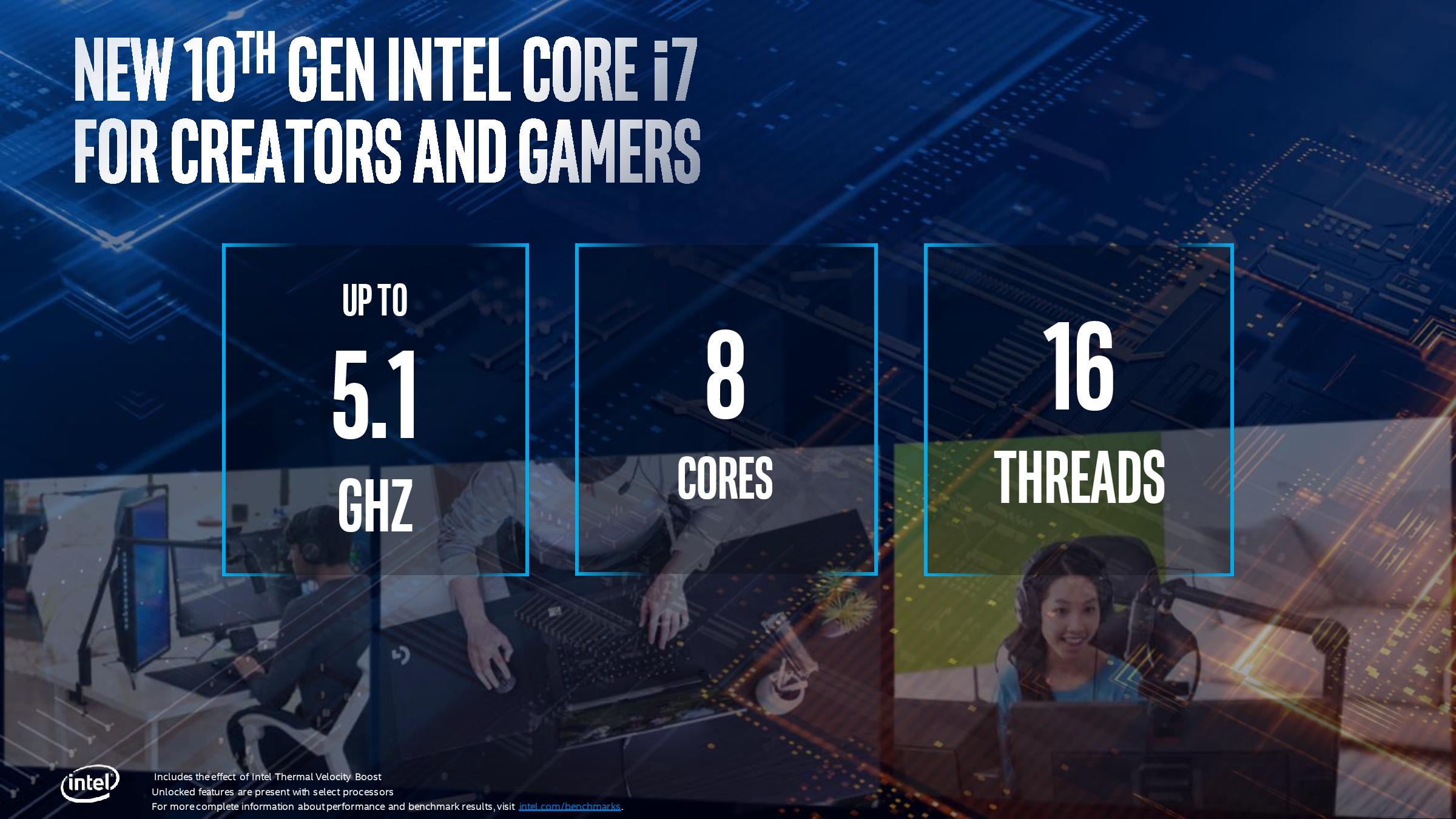



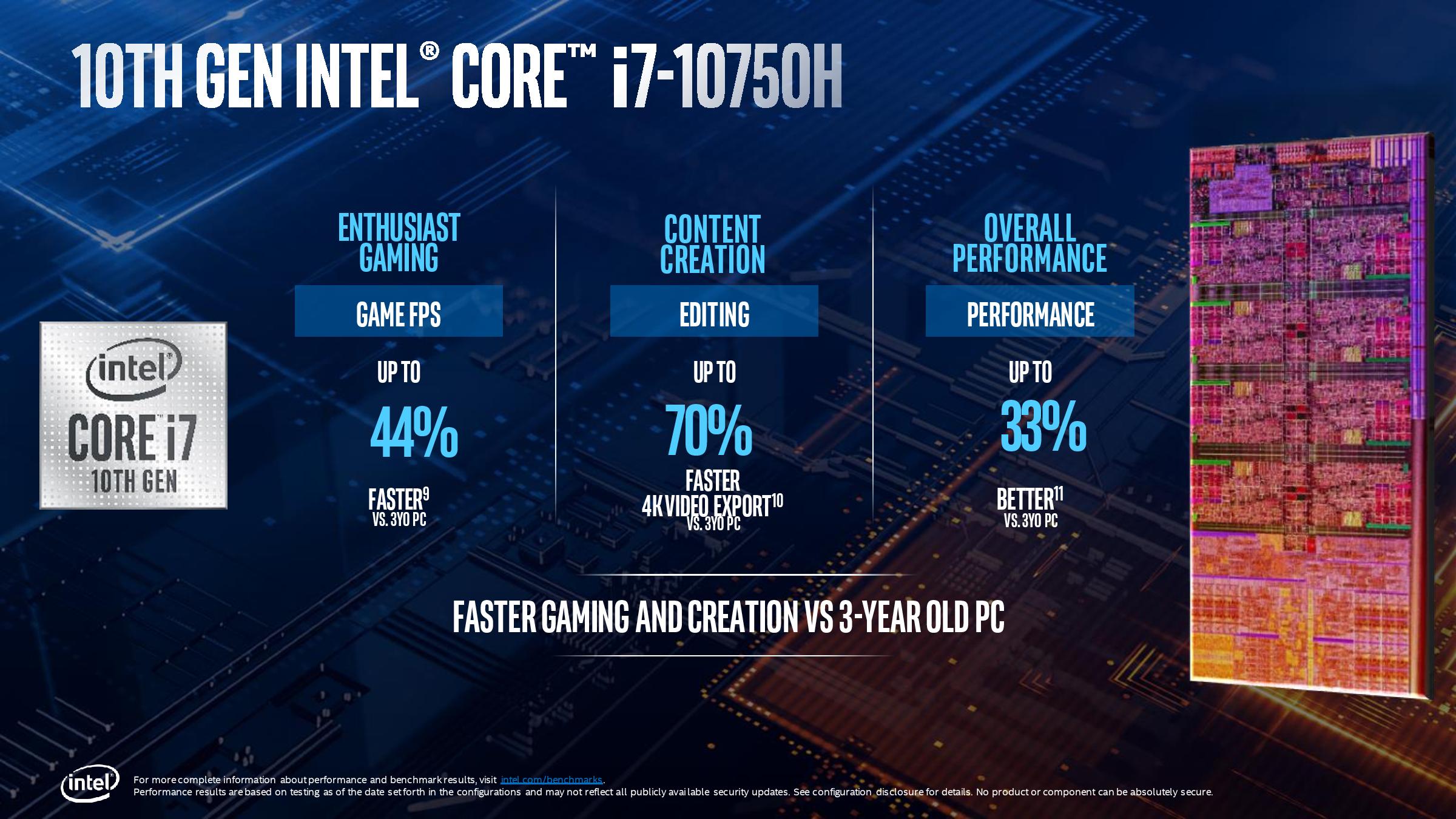
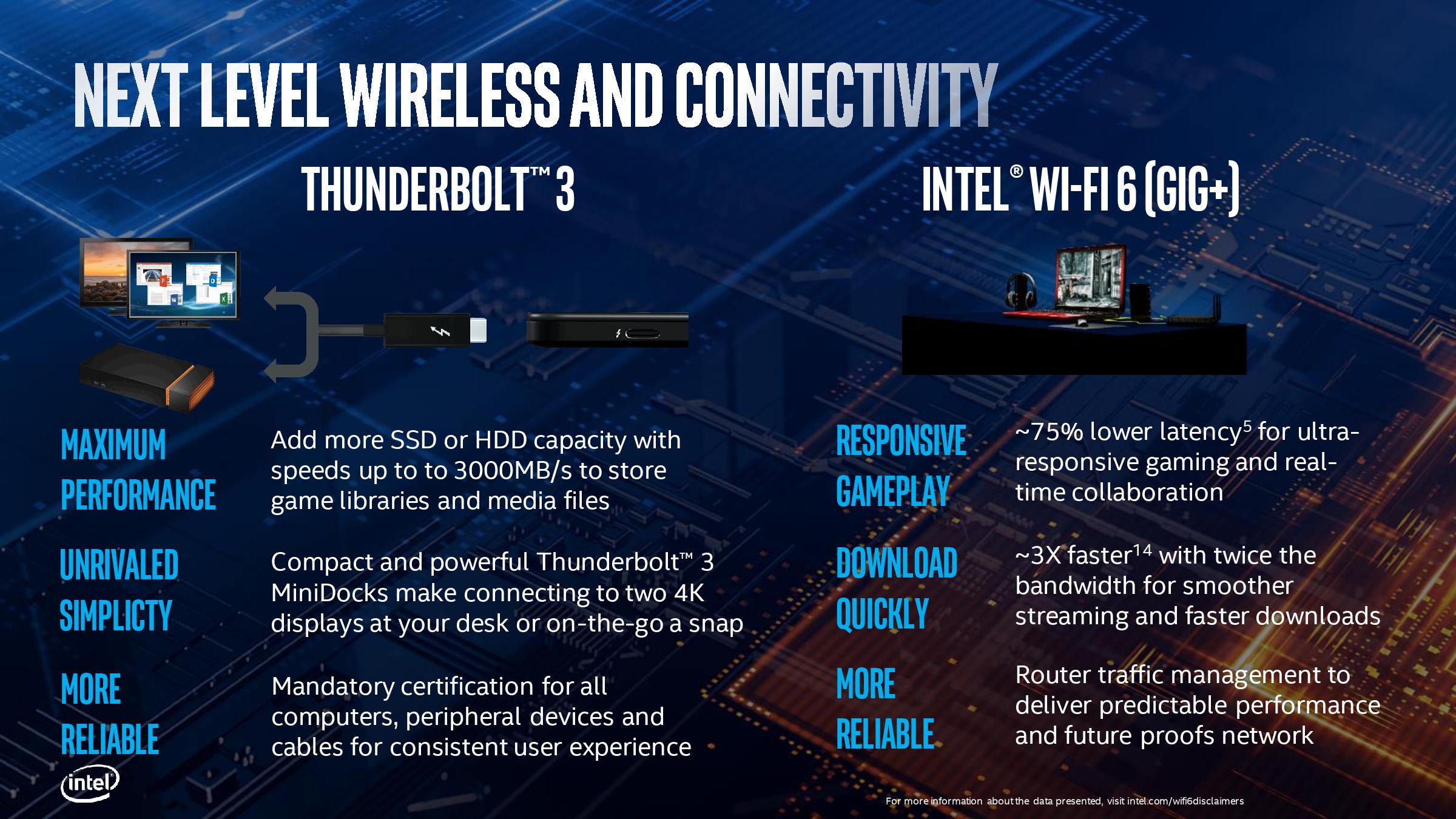

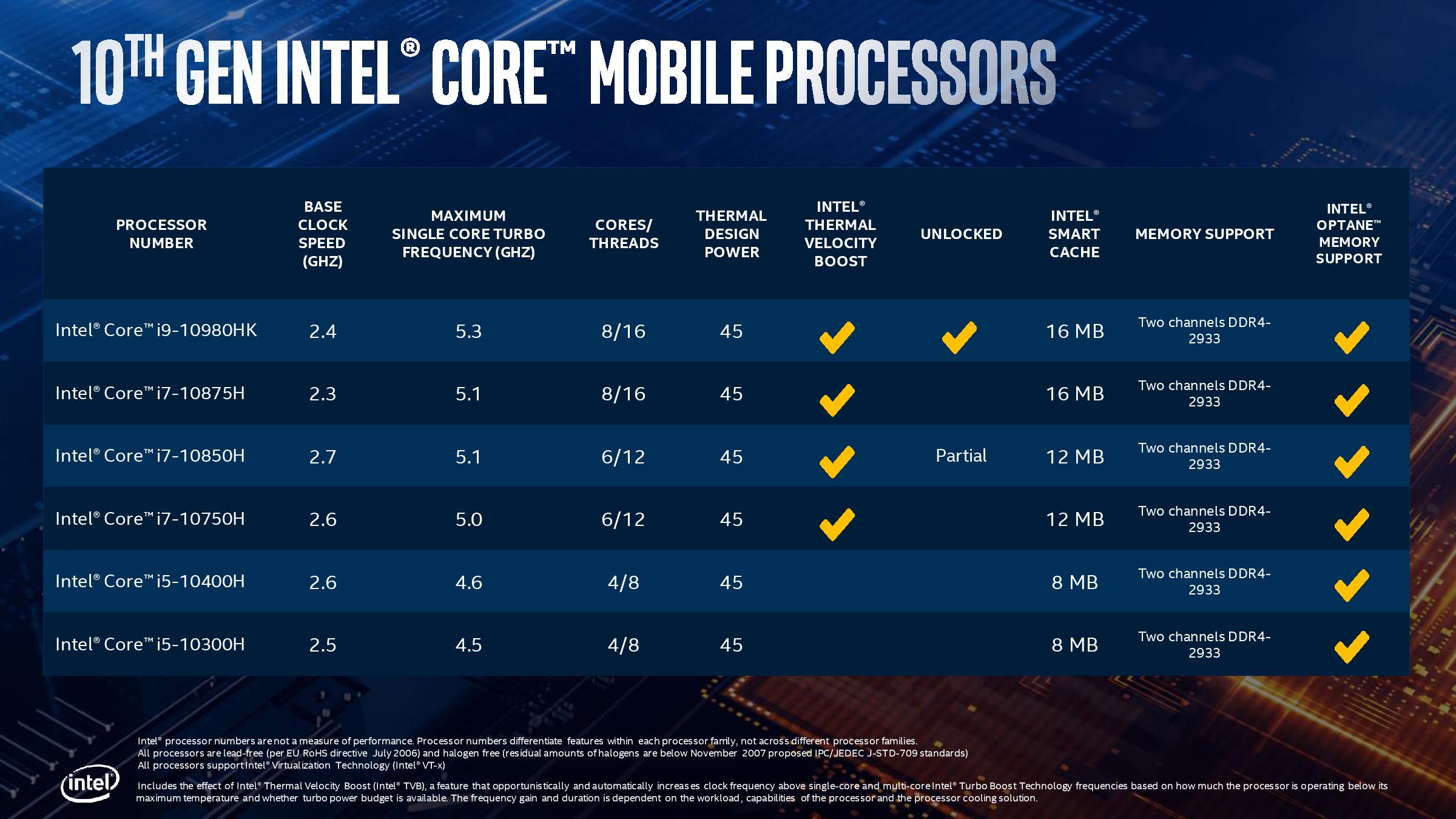

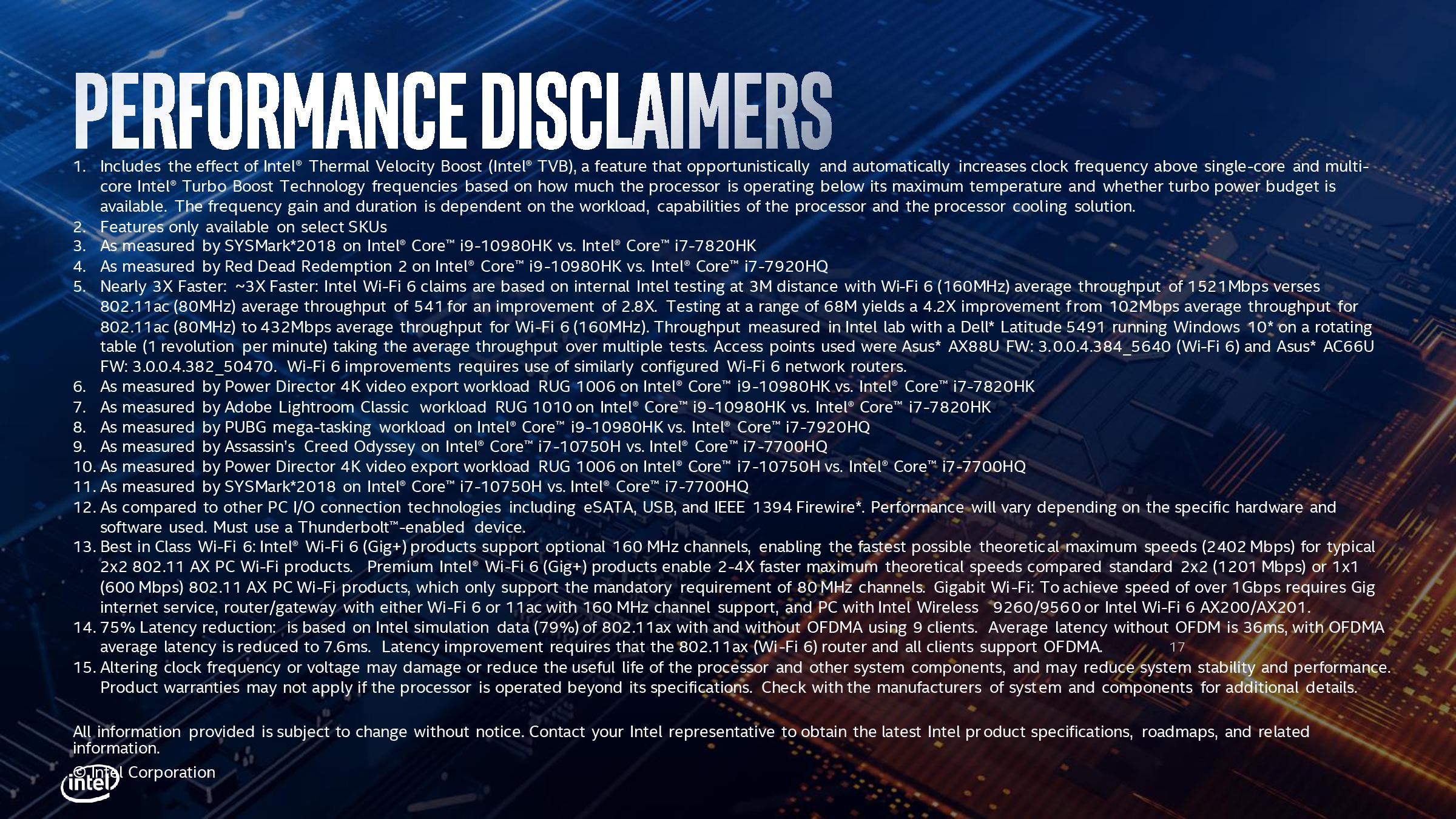

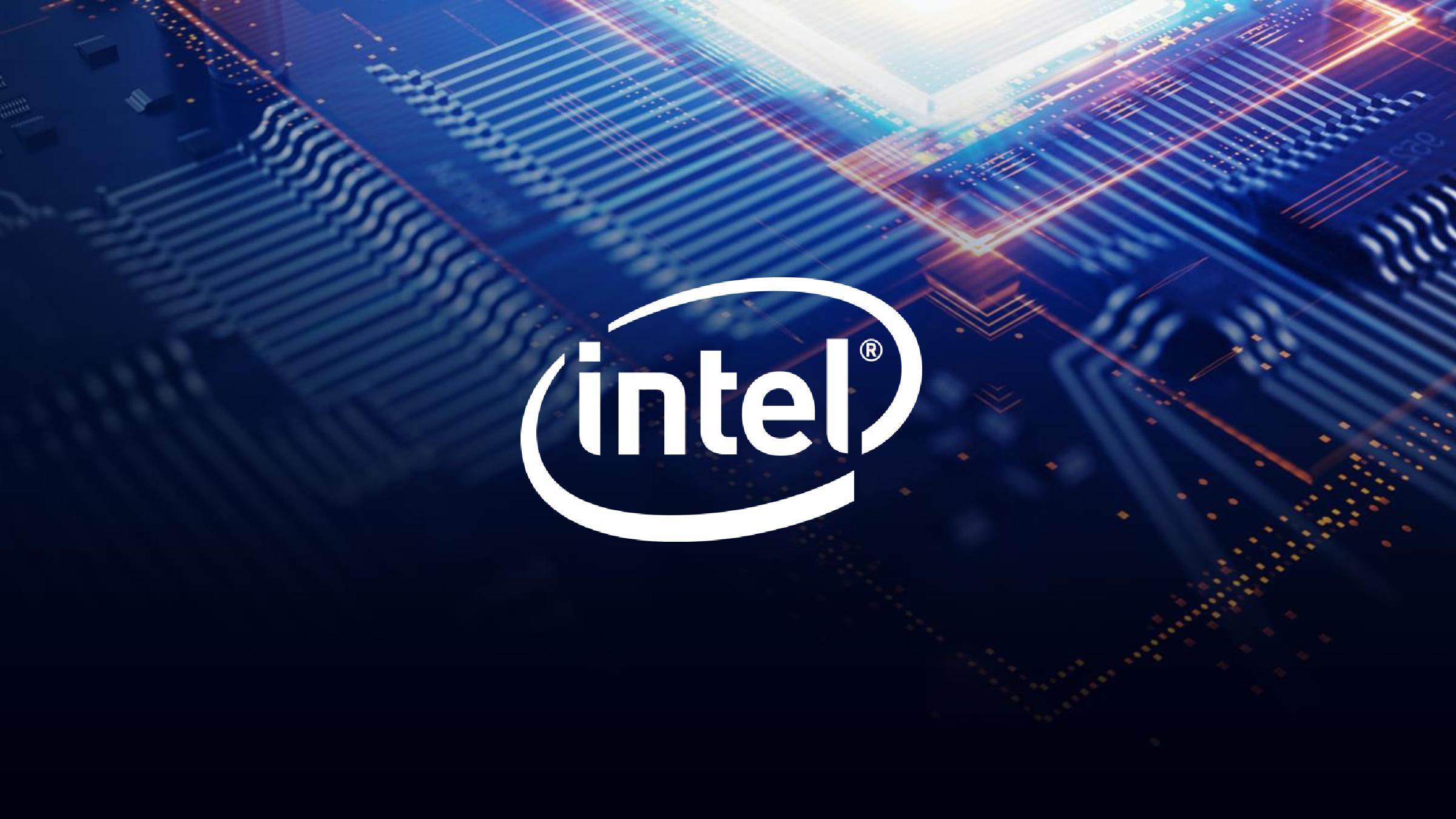

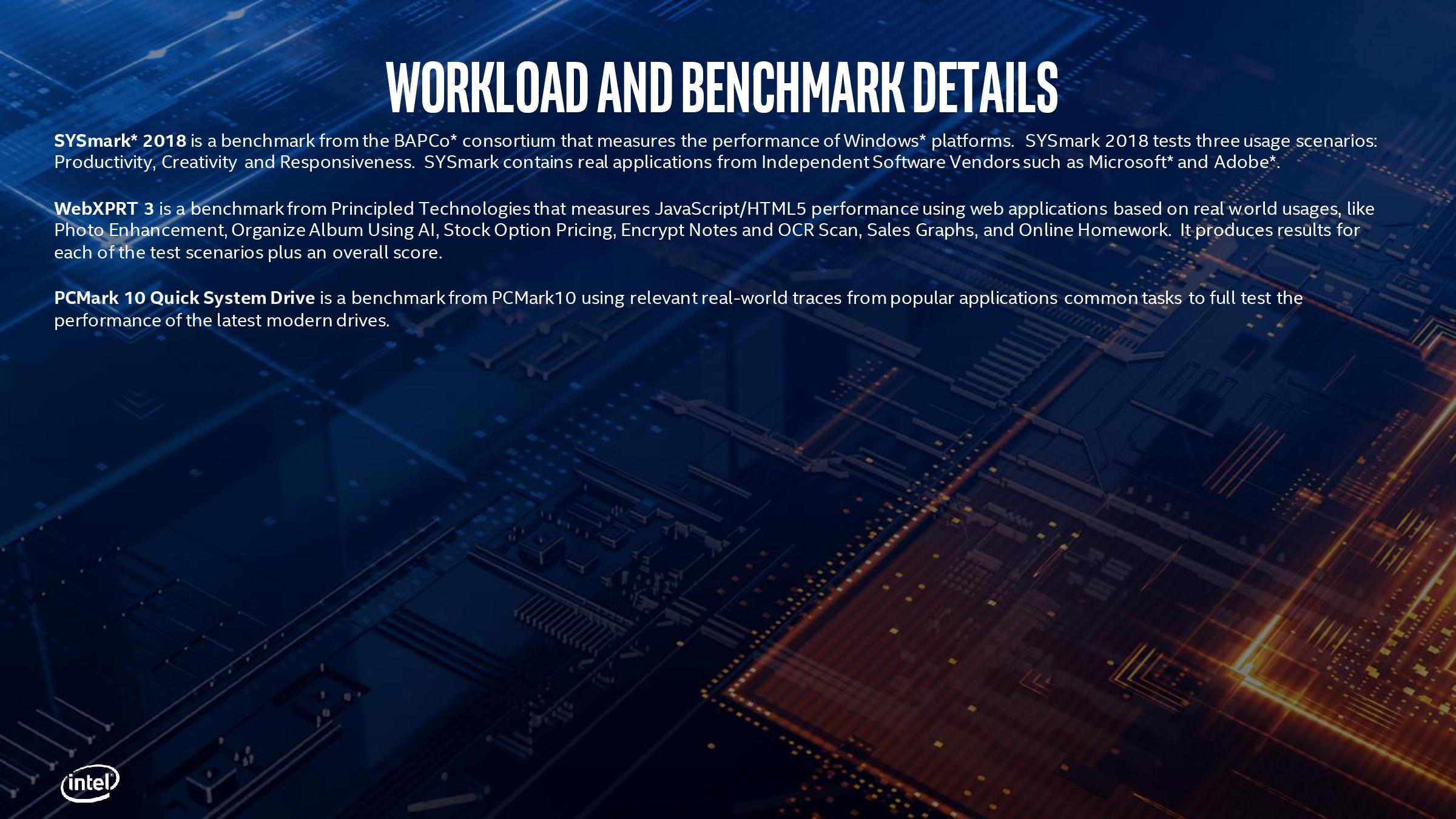
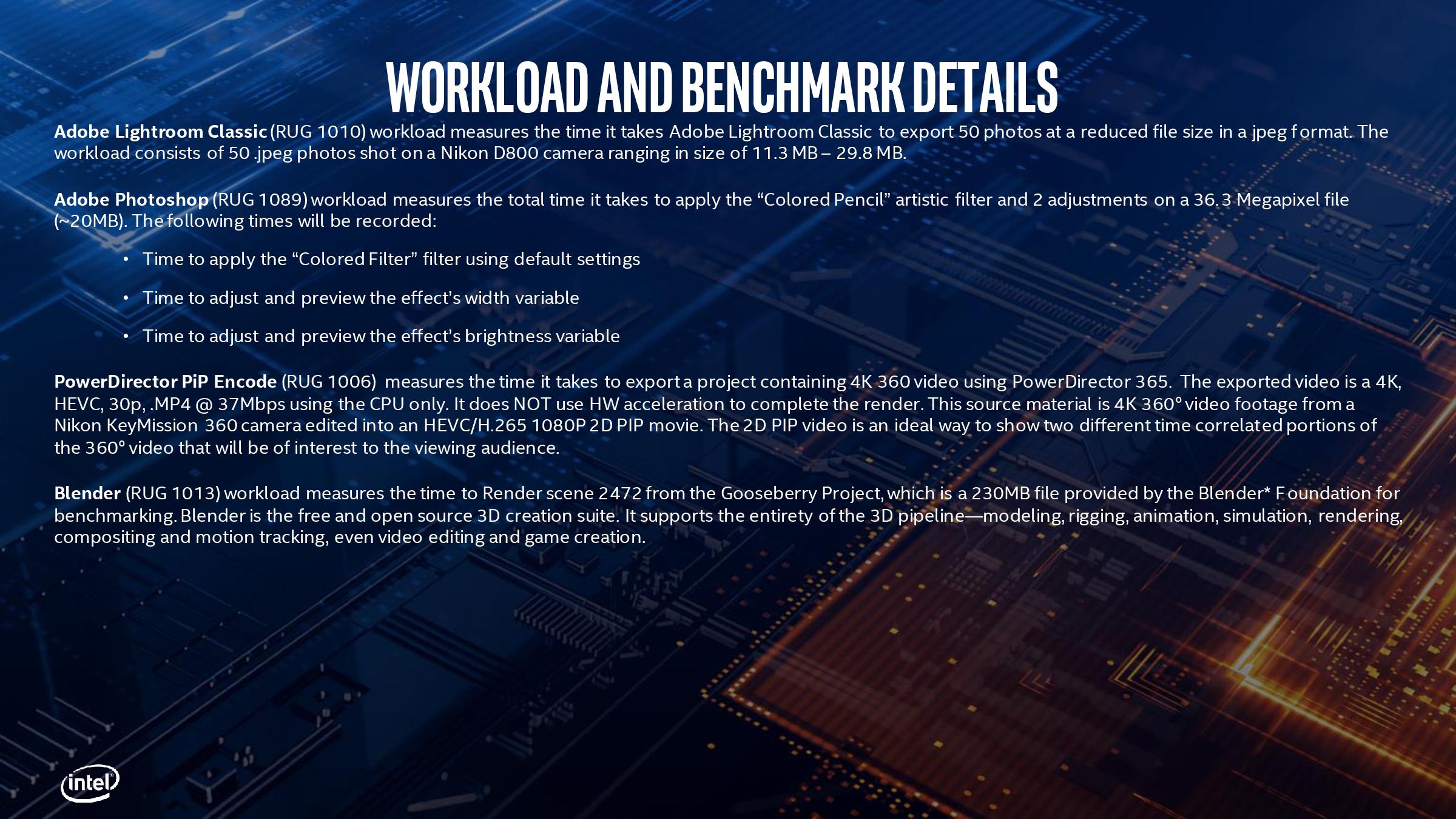
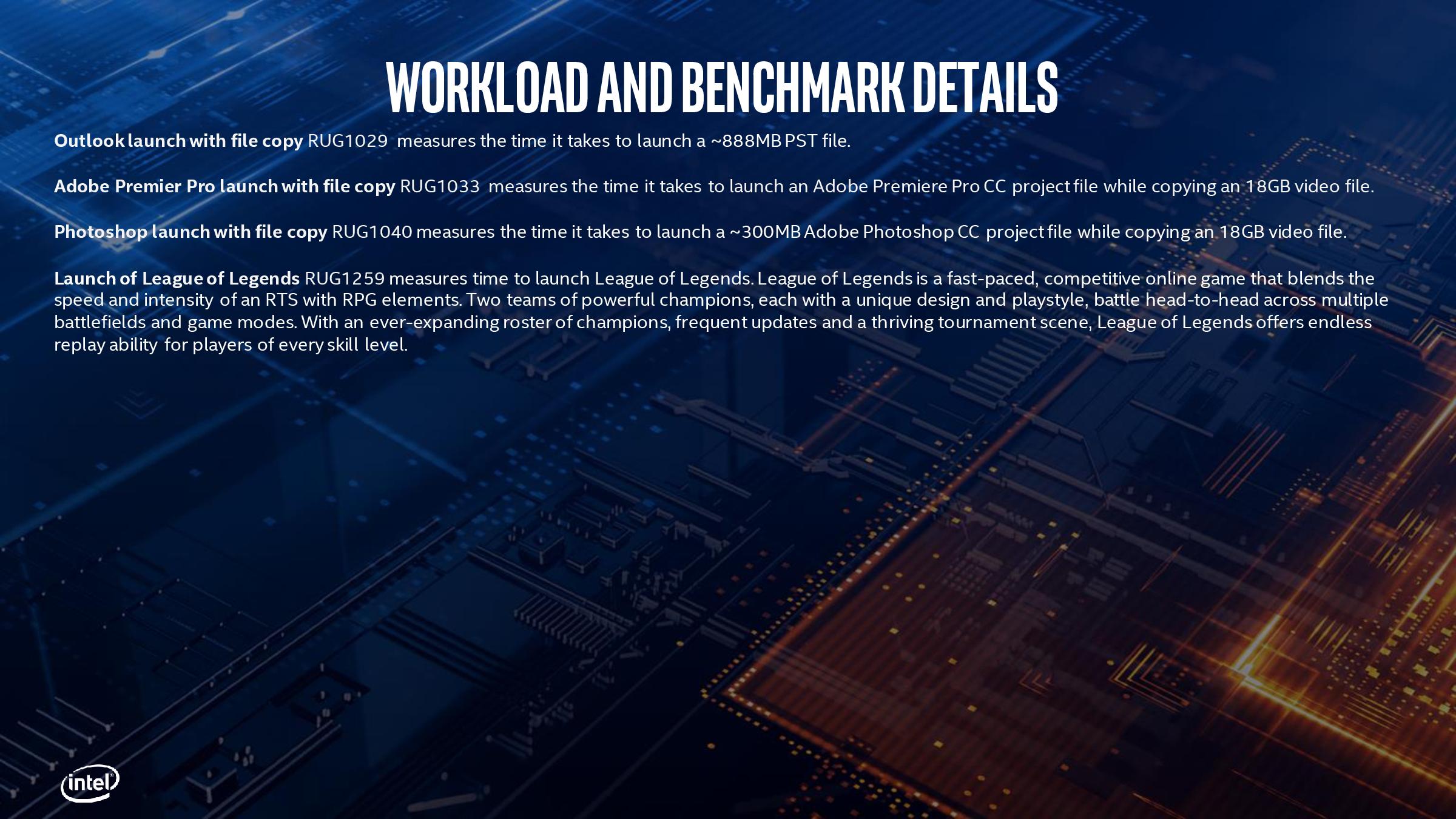

Intel provided benchmarks comparing its new chips against three-year-old laptops, which is standard fare when the company compares performance based on upgrade cycles. They aren't very useful, though, and as with all vendor-provided benchmarks, you should take these with a grain of salt. Intel acknowledged that this is an unusually slim selection of benchmarks, but representatives said that production delays from China due to the coronavirus have left the company without many shipping models for testing. These projections also don't have any of the new Ryzen 4000 series models listed, but that's likely due to their arrival a mere two days ago. These factors combined make these benchmarks largely useless for any real comparisons.

Intel's new lineup leverages the company's tried-and-true tactic of using superior clock speeds, which often equate to improved gaming performance, as its major weapon against AMD's latest chips, but we won't know the real story until laptops hit the market. That's largely because Intel's boost mechanisms are limited by the thermal performance of the laptop, so performance will vary widely between different systems, especially as Intel turns up the power dial to fight off AMD.
Intel has vPro-equipped and Xeon models of these same chips coming later this year to complement a broad ecosystem of consumer laptops. Intel also continues to develop its Project Athena initiative that grants the company some advantages in the premium design space, but the areas where the company has a clear win are growing narrower. Meanwhile, AMD's laptop roster, not to mention the quality of the Ryzen 4000 laptops' secondary components, continue to improve at a rapid pace. That's critical as AMD continues to push into the laptop market that comprises 60% of the overall consumer chip market. We can't wait to see how the two lineups compare once they hit our labs.

Paul Alcorn is the Editor-in-Chief for Tom's Hardware US. He also writes news and reviews on CPUs, storage, and enterprise hardware.
-
salgado18 5.3 GHz sound nice, but the base clocks compared to Ryzen 4000 may tell the real story. Until 10nm, Intel will only have its brand name and leverage among OEMs to fight.Reply -
irish_adam the gaming benchmark chart is disgusting, the new laptop has the latest generation Nvidia GPU while the old one has the last generation. The jump in performance in those charts has nothing to do with the CPU and its shameful, pinch of saltReply -
RodroX Well I guess this article is informative, but for the moment its just that. Unless you are able compare laptops of similar weight, size and TDP configurations, and so the whole media can bring thier own result numbers too then all you have is what Intel said.Reply
Intel numbers, as AMD, Nvidia, and the likes have to be (always) taken with a grain of salt. -
jeremyj_83 "Intel also brought its Core i7 lineup to a maximum of eight cores and sixteen threads with the -10750H " according to the chart the 1075H & 1085H are 6c/12t. The only i7 that is 8c/16t is the 1075HReply -
jeremyj_83 Reply
Even the i7-10750H has a better GPU, 2070 Super, than the test i7-7700HQ. GTX 1080. As you said the added performance has nothing to do with the CPUs and everything to do with the GPUs being much faster. While it is nice that they included the configurations, I wish that companies would put the configurations before the benchmarks instead of at the end of the slide deck.irish_adam said:the gaming benchmark chart is disgusting, the new laptop has the latest generation Nvidia GPU while the old one has the last generation. The jump in performance in those charts has nothing to do with the CPU and its shameful, pinch of salt my ass -
jeremyj_83 Reply
Outside of bursting workloads, I feel the new i9-10980HK will be slower overall than the Ryzen 9 4900H/S. With the Asus ROG Zephyrus G14 review, we saw a Dell XPS 15 with a i9-9980HK end up being a bit slower than the 4900HS. The only difference between the 9980HK & 10980HK is +300MHz boost and 2933MHz RAM vs 2666MHz RAM. When looking at that review in regards to the 20x Cinebench R20 runs, which shows sustained clock speed and performance, we see that the 4900HS ended with an average clock speed of just 3.1GHz; that is only 100MHz above its base clock which likely doesn't speak well for the i9 either. We already know that the current generation Core draws more power and creates more heat than Ryzen. That is probably why "Intel also divulged that the -10980HK offers an all-core boost of 4.4 GHz and several of the chips have a configurable TDP that peaks at 65W. Peak power (PL2) weighs in at 135W." At the peak PL2 you will burn through your battery in a matter of minutes.salgado18 said:5.3 GHz sound nice, but the base clocks compared to Ryzen 4000 may tell the real story. Until 10nm, Intel will only have its brand name and leverage among OEMs to fight. -
Dragonking_1 Replyjeremyj_83 said:"Intel also brought its Core i7 lineup to a maximum of eight cores and sixteen threads with the -10750H " according to the chart the 1075H & 1085H are 6c/12t. The only i7 that is 8c/16t is the 1075H
Its the i7-10875H that is 8c/16t, other than the 10980HK. -
Paul Alcorn Reply
Oops, thanks for the heads up. fixed.jeremyj_83 said:"Intel also brought its Core i7 lineup to a maximum of eight cores and sixteen threads with the -10750H " according to the chart the 1075H & 1085H are 6c/12t. The only i7 that is 8c/16t is the 1075H -
jeremyj_83 Reply
Whoops, missed a number in my statement. Thanks for pointing that out.Dragonking_1 said:Its the i7-10875H that is 8c/16t, other than the 10980HK. -
JamesSneed First they compared to three year old part the i7-7820HK which is just trying to game results.Reply
Second there is no way we see laptops with these boosts. See this from Ian at Anandtech. There is virtually no way a laptop maker will implement a PSU capable of producing the amperage needed.
"It does mean that in order to hit 5.3 GHz, the Core i9 is by default allowed to take 135 W across two cores, or 67.5 W per core. Even at 60W per core, you're looking at 50A of current per core... in a laptop. "